Stewart Island is a pretty unique place, at just 1,746 square kilometres (674 sq miles) most of the island is a protected National Park, and the island has a permanent population of only around 350 people. The naturalist Leonard Cockayne described the island as ‘an actual piece of the primeval world’, and thanks to the careful management of the island and surrounding waters this is still pretty much true today. Although we had plans to complete the Great Walk on the island, with a beautiful afternoon ahead of us we decided to explore some more of the island based on the recommendations of the lady at the Department of Conservation.
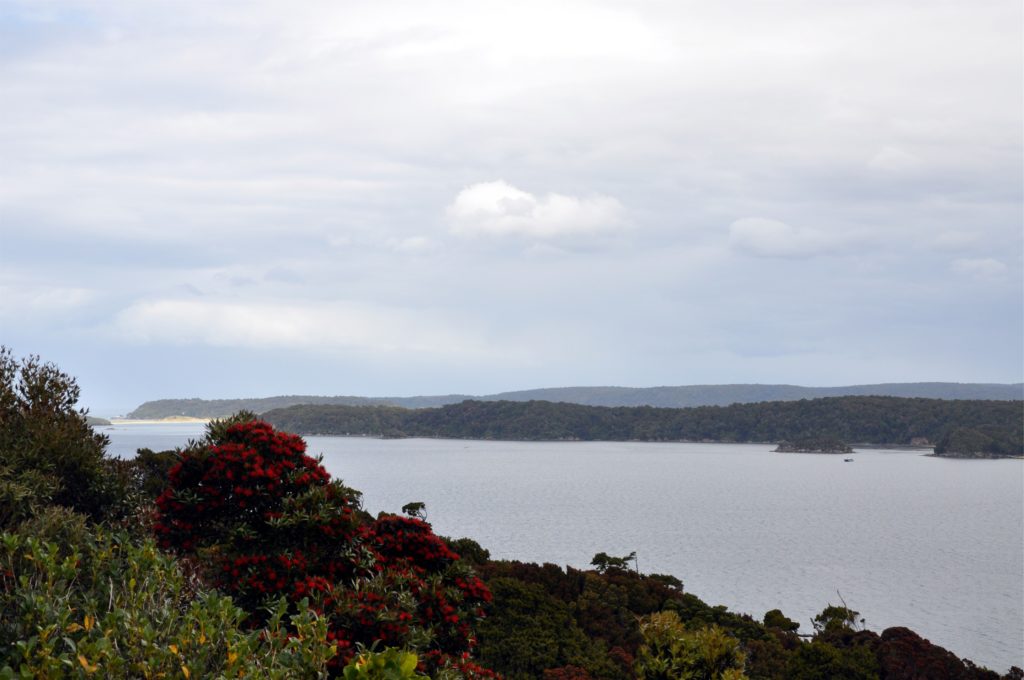
We started our hike by climbing up to Observation Rock, after weaving our way through a section of forest that had been untouched by logging operations on the island we came to a clearing with great views out over Patterson Inlet. From here we could look across to Ulva Island, a bird sanctuary just off the coast of Stewart Island. Ulva Island was declared predator-free in 1997 and is now the home to many endangered native bird species.

From Observation Rock, we make our way down to the coast, stopping at several of the small bays along the way. The water around Stewart Island is also a protected marine reserve and Eric and I were both amazed at how clear the water was. Wherever we were on the island we were able to look down and see huge amounts of plant and animal life, it was so refreshing to see what appeared to be a healthy ocean.
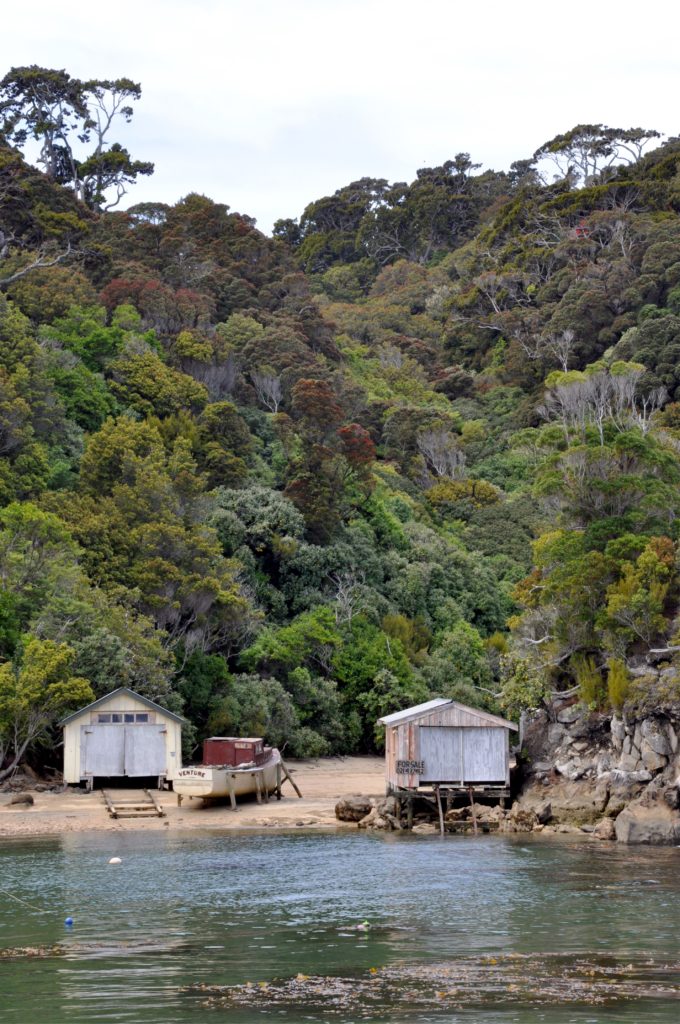
We continued around the island, passing yet more fishing huts. The island is famous for its lobsters, known here rather confusingly as crayfish. It is said that the cold waters around Stewart Island make the lobster meat sweeter than normal.

From here we started to climb away from the shore and back into the forest, we were both surprised to see a tiny white tail deer peering out of the bushes at the side of the track. From what we could find out, it seems that they were introduced to the island from North America at some point.
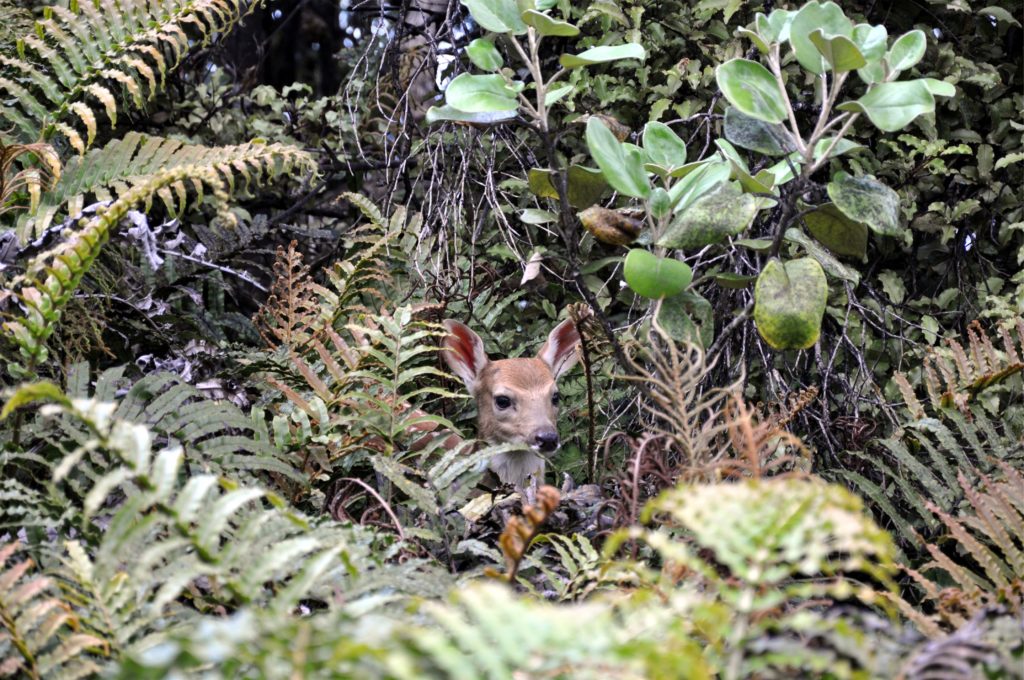
We continued to follow the trail around the island, getting occasional glimpses of Ulva Island and the other outlying islands through the gaps in the trees.
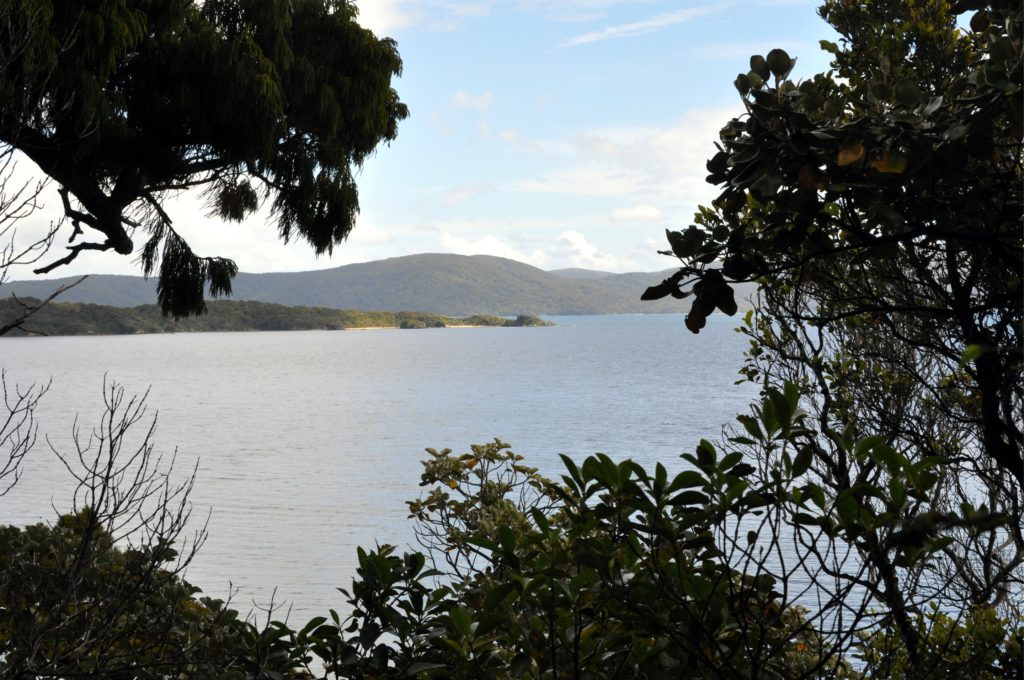
By this time the clouds had once again cleared and with the sun shining on the clear waters it gave the island an almost tropical feel. In sheltered parts of the island the Rata trees were just coming into bloom, turning large parts of the forest canopy a beautiful crimson.
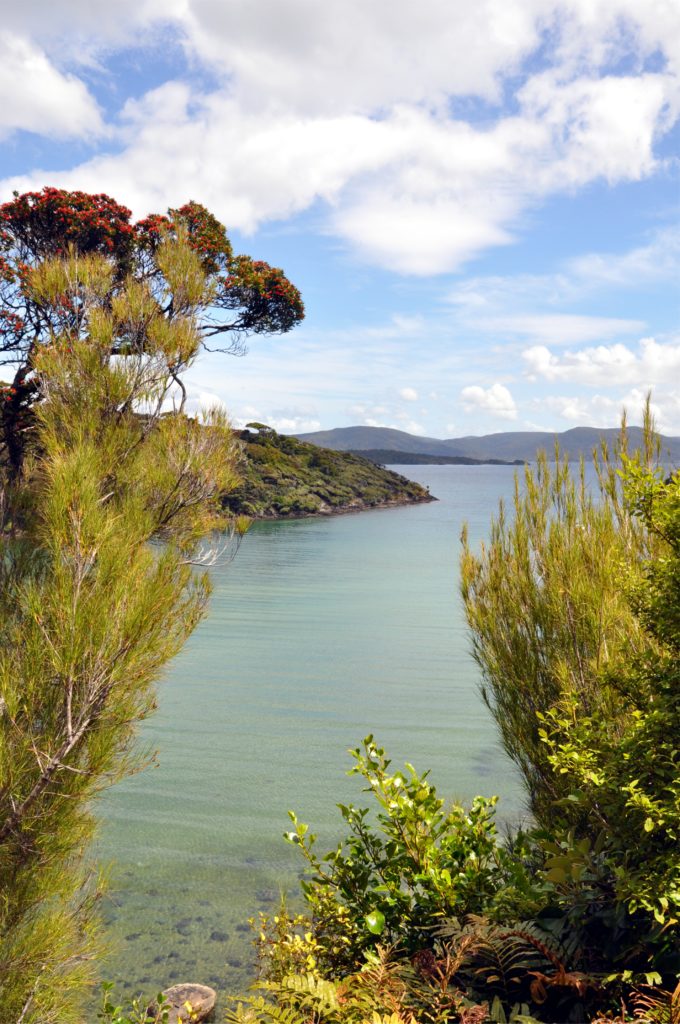
Our final stop was Deep Bay in the southeastern corner of the island. We sat for a while on the beach watching a group of oyster catchers wandering around the sand.
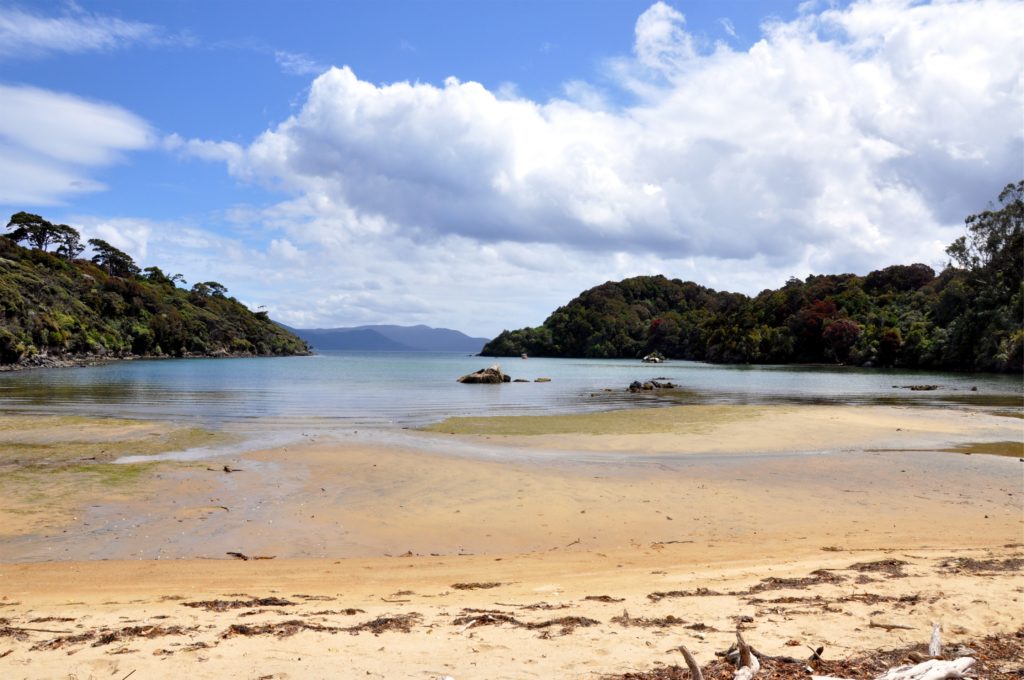
We make our way back to the tiny town of Oban, following a clifftop path for a while which gave us great views out of the coastline towards Native Island, another small uninhabited island off the coast of Stewart Island.
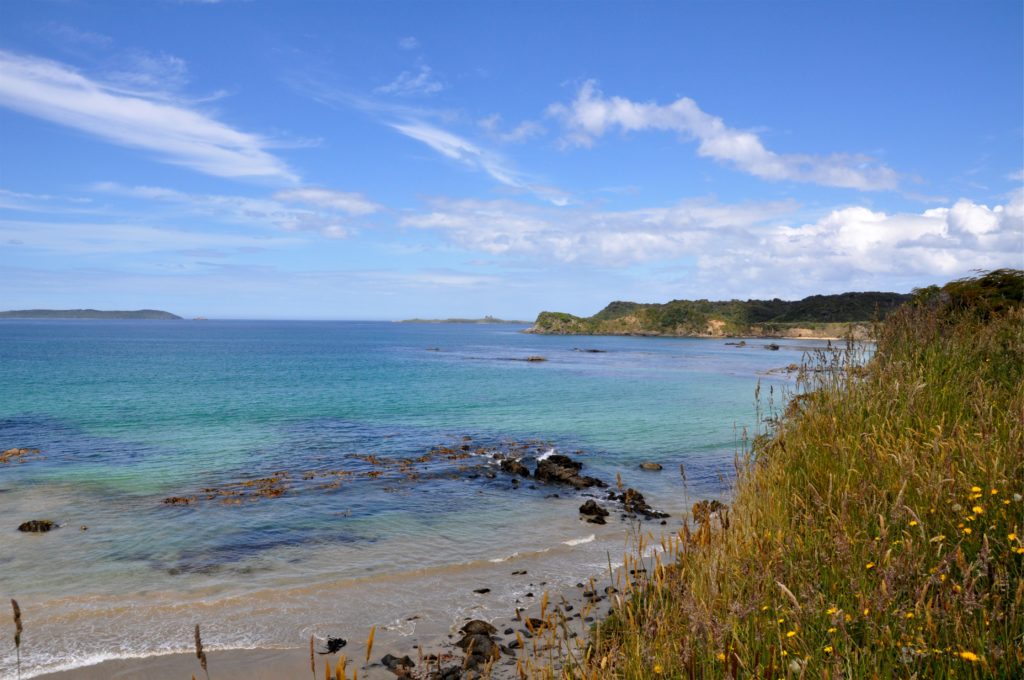
We returned to our motel and spent some time relaxing and getting ready for our backpacking trip the following day. Whilst we were sitting quietly in our room, we had a visit from a Kaka.
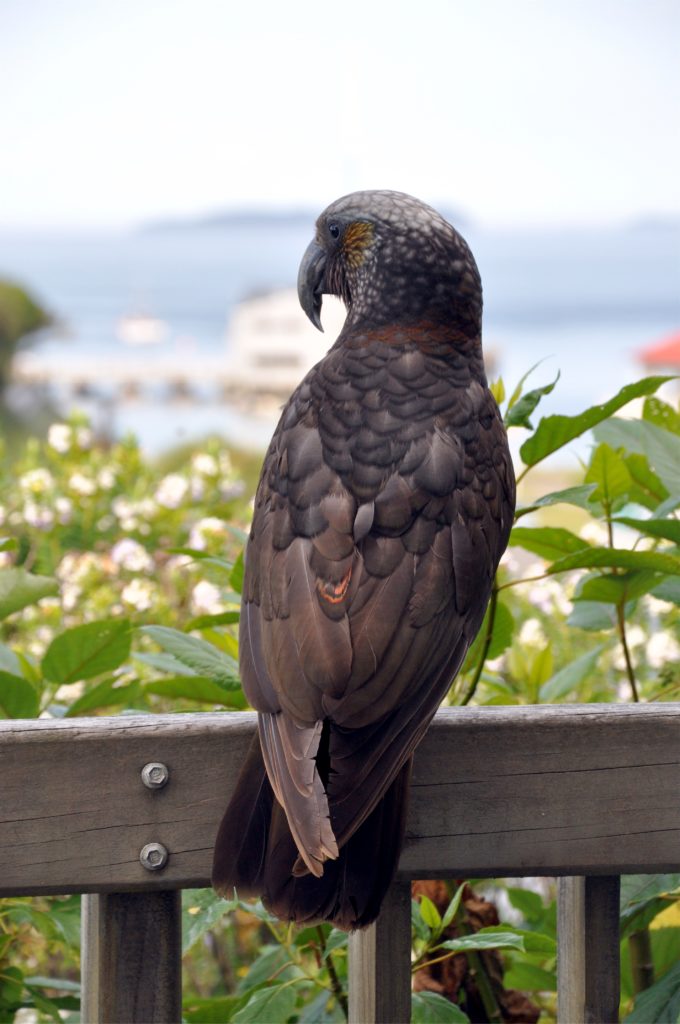
These large parrots are common on Stewart Island where they have fewer predators than in the rest of New Zealand. The Kaka spent a while looking in at us through the glass doors and kept up what seemed to be an almost constant stream of chatter as it squawked and moved through a variety of loud, musical whistles interspersed with the odd guttural rumble.
After the Kaka left us we set out in search of dinner, enjoying a delicious meal of local seafood. Before heading to bed we stopped by the wharf and were able to watch a few local blue penguins returning home to the rocks on the edge of town. But with the penguins only returning at dusk, which this far south was well past ten o’clock at night, we decided to return to our motel and get some rest ready for our first day of hiking in the morning.
